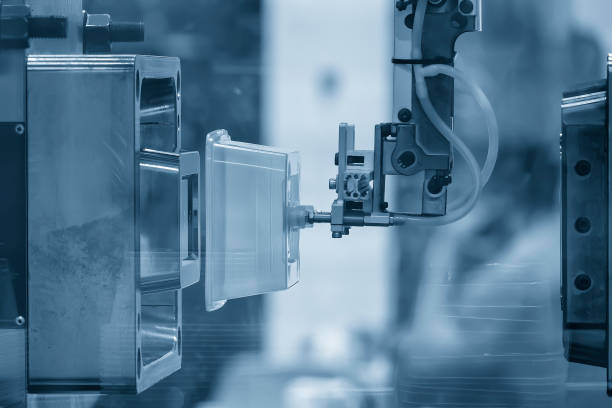Smart injection molding is revolutionizing the manufacturing industry by seamlessly integrating IoT Internet of Things technology to achieve enhanced process control. Traditionally, injection molding has been a highly efficient method for producing complex plastic components, but it often lacked real-time monitoring and optimization capabilities. However, with the advent of IoT, manufacturers can now monitor and control various aspects of the injection molding process remotely and in real-time, leading to improved efficiency, quality, and cost-effectiveness. One of the key components of smart injection molding is the integration of sensors throughout the molding equipment. These sensors can monitor crucial parameters such as temperature, pressure, humidity, and machine vibrations. By collecting data from these sensors, manufacturers can gain valuable insights into the performance of the injection molding process. For example, temperature sensors can detect any fluctuations in temperature that may affect the quality of the final product, while pressure sensors can ensure that the mold is filled evenly and consistently. Additionally, sensors can detect any anomalies or deviations from the optimal operating conditions, allowing for immediate corrective actions to be taken.

IoT technology enables this data to be transmitted in real-time to a central monitoring system, where it can be analyzed and visualized using advanced analytics tools. In This real-time injection molding companies monitoring capability allows manufacturers to identify potential issues or inefficiencies as soon as they arise, minimizing downtime and preventing costly defects. Furthermore, by analyzing historical data collected over time, manufacturers can identify patterns and trends that can help optimize the injection molding process for even greater efficiency and quality. Another key aspect of smart injection molding is the use of predictive maintenance algorithms. By continuously monitoring the performance of the molding equipment, IoT-enabled systems can predict when maintenance is required before any issues arise. This proactive approach to maintenance helps prevent unexpected breakdowns and extends the lifespan of the equipment, reducing overall maintenance costs and increasing productivity. Moreover, IoT technology enables greater connectivity and communication between different components of the manufacturing process. For example, data collected from sensors on the injection molding machines can be integrated with other systems such as inventory management and supply chain software.
This seamless integration allows for better coordination and optimization of the entire production process, from raw material procurement to final product delivery. Furthermore, smart injection molding opens up new possibilities for remote monitoring and control. Manufacturers can access real-time data and control parameters from anywhere in the world using a secure internet connection. This flexibility allows for greater agility and responsiveness, particularly in situations where rapid adjustments to production schedules or parameters are required. In conclusion, smart injection molding represents a significant advancement in the manufacturing industry, offering enhanced process control, improved efficiency, and cost-effectiveness. By leveraging IoT technology to monitor, analyze, and optimize the injection molding process in real-time, mold manufacturing can achieve higher levels of quality and productivity while reducing downtime and costs. As IoT continues to evolve, the potential for further innovation in smart injection molding is limitless, promising even greater advancements in the years to come.